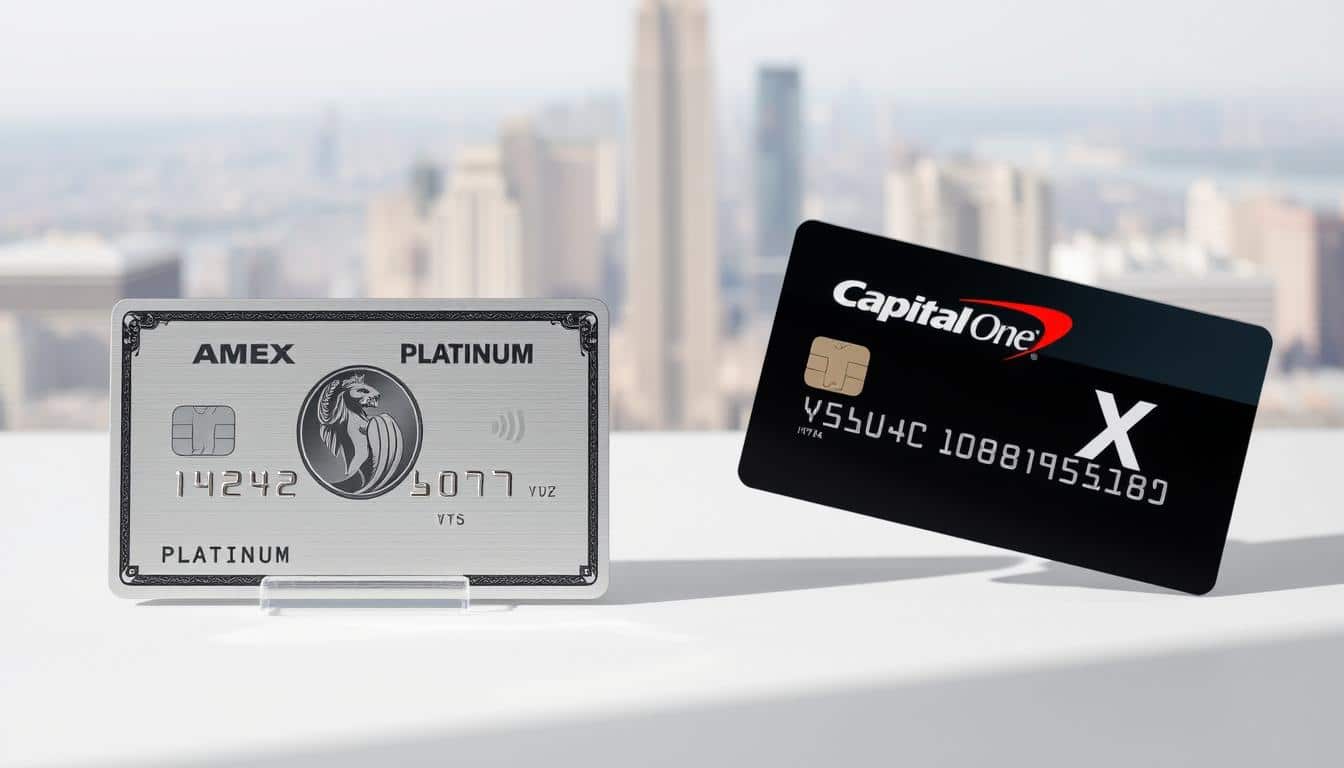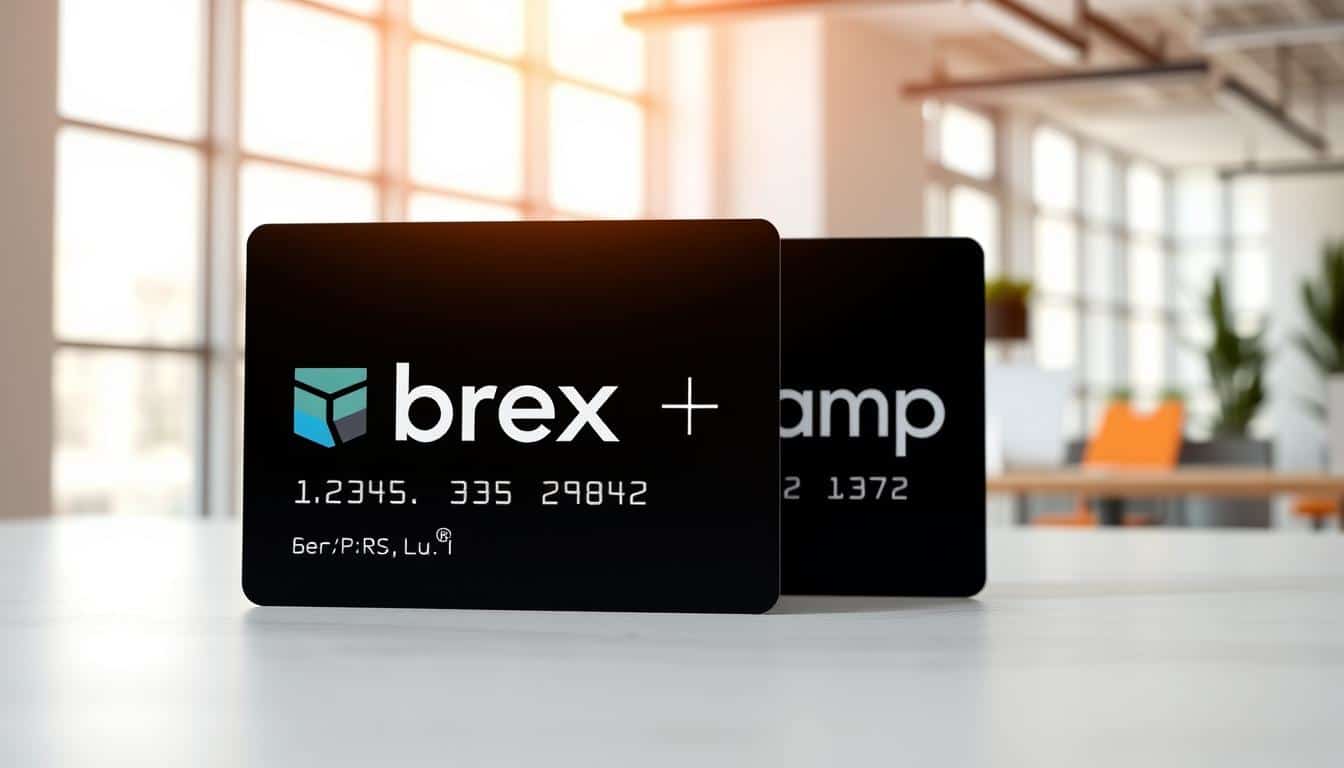Want to maximize your travel points with flexibility?
The Chase Sapphire family represents a clear choice for U.S. consumers who want premium travel rewards and elevated dining rewards from a mainstream bank. When people say “Chase Sapphire,” they usually mean two flagship travel credit cards: the Sapphire Preferred and the Sapphire Reserve. Both cards earn Chase Ultimate Rewards points, which offer flexibility for travel redemptions and transfers to airline and hotel partners.
This article guides American cardholders through what matters most: how each card earns and redeems points, the travel protections and insurance that come with ownership, typical sign-up bonuses, and the real costs and credits that affect ongoing value. We will also explain Chase-specific application rules such as the 5/24 policy and what it means for approval odds.
Core selling points are straightforward: elevated points-earning on travel and dining, travel protections and perks like trip delay and primary rental car coverage, transferable Chase Ultimate Rewards points, and premium cardholder credits and experiences that can offset annual fees. The goal is to help you decide whether Sapphire Preferred or Sapphire Reserve — or neither — fits your travel and dining habits.

Chase Sapphire Preferred
Key Takeaways
- Chase Sapphire refers mainly to Sapphire Preferred and Sapphire Reserve, both earning Chase Ultimate Rewards.
- These travel credit cards focus on strong rewards for travel and dining purchases.
- Transfer partners give flexibility for high-value redemptions with airlines and hotels.
- Premium perks include travel protections, lounge access options, and statement credits that can offset fees.
- Application rules like the 5/24 policy and annual fees are important considerations before applying.
Comparison: Chase Freedom Unlimited, Chase Sapphire Preferred, and Chase Visa Platinum
Chase Bank provides a diverse range of credit cards designed to suit different customer needs and spending habits. Among its most recognized options are the Chase Freedom Unlimited, Chase Sapphire Preferred, and Chase Visa Platinum.
Below, you’ll find a detailed comparison outlining the main features, benefits, and ideal users for each card.
1. Chase Freedom Unlimited
Annual Fee: $12.90/month (R$ 154.80/year)
Key Features:
- Accepted internationally
- Points program redeemable for cashback or partner discounts
- Option to pay in installments with reduced interest rates
Best For: Customers looking for an affordable card that offers practical benefits and global usability.
2. Chase Sapphire Preferred
Annual Fee: $19.90/month (R$ 238.80/year)
Key Features:
- International acceptance
- Enhanced points program with more flexible redemption choices
- Installment payments with reduced interest
- Access to exclusive partner promotions and special offers
Best For: Consumers who want a card that combines affordability with additional rewards and travel flexibility.
3. Chase Visa Platinum
Annual Fee: $29.90/month (R$ 358.80/year)
Key Features:
- Global acceptance
- Comprehensive points program with multiple redemption options
- Flexible installment payment plans with lower interest
- Priority access to exclusive discounts and offers
- Dedicated premium customer support
Best For: Cardholders who value premium experiences, personalized service, and extensive benefits.
Quick Comparison Table
| Card | Annual Fee | Main Benefits | Ideal For |
|---|---|---|---|
| Chase Freedom Unlimited | R$ 154.80/year | Points, cashback, low-interest installments | Everyday users with moderate spending |
| Chase Sapphire Preferred | R$ 238.80/year | Points, cashback, exclusive partner offers | Consumers seeking more flexibility and value |
| Chase Visa Platinum | R$ 358.80/year | Points, cashback, exclusive discounts, premium service | High spenders who want premium perks |

Chase Freedom
Conclusion
Choosing between the Chase Freedom Unlimited, Chase Sapphire Preferred, and Chase Visa Platinum depends on your personal spending habits and priorities.
- Chase Freedom Unlimited is best for those who want basic benefits and a low annual cost.
- Chase Sapphire Preferred fits consumers who appreciate more rewards and flexibility.
- Chase Visa Platinum is ideal for those who desire luxury benefits and personalized assistance.
Before applying, review your financial goals and usage habits to determine which card aligns best with your lifestyle.
Overview of Chase Sapphire – Premium travel and dining rewards
Chase Sapphire positions itself as a premium rewards program focused on travel and dining. Cardholders earn elevated points on restaurants and travel, convert points to Chase Ultimate Rewards partners and gain layered travel protections. The product family spans value options and high-end perks so consumers can match benefits to budget and travel habits.
What makes Chase Sapphire a premium rewards program
High earning rates on dining and travel set Chase apart from many general rewards cards. Points transfer to partners like United, Southwest, World of Hyatt and Marriott Bonvoy, giving broad redemption flexibility.
Travel protections include trip cancellation and interruption coverage, primary rental car insurance on eligible cards and purchase protections. Some versions add Priority Pass lounge access, concierge services and event access that enhance the travel experience.
Who should consider Chase Sapphire cards
Frequent travelers who spend on dining and want transferable points should look closely at who should get Chase Sapphire. Business and leisure travelers who value flexibility and shovelable travel credits will see the most value.
Those who dislike annual fees may favor lower-cost options. Card collectors who prefer high multipliers for travel booked through a bank portal or who want strong redemption partners will find the lineup appealing.
Comparison to other premium travel and dining cards
Chase vs Amex Platinum often comes down to style of perks. American Express Platinum offers stronger concierge and Centurion-style benefits with a high annual fee. Chase tends to balance a lower or mid-tier fee with hands-on transfer flexibility.
Capital One Venture shows a simpler flat-rate rewards model. Co-branded airline and hotel cards deliver deeper brand-specific perks, but limited transfer freedom. For a Citi Prestige comparison, note that Citi historically emphasized premium travel insurances and hotel benefits, while Chase focuses on partner breadth and dining earn rates.
- Strengths: wide transfer network, competitive dining rewards, solid travel protections.
- Weaknesses: fewer ultra-luxury extras than some metal-card offerings, differences in benefits between card variants.
Key benefits for travel enthusiasts
The Chase Sapphire lineup delivers clear perks for frequent travelers. Cardholders earn elevated rewards on travel, gain a suite of protections for trips, and access airport lounges and transfer partners that turn points into premium flights and stays.
Points earning rates on travel purchases
Chase cards typically pay boosted multipliers on travel purchases. Rates vary by product; for example, one card offers 2 points per dollar on general travel and 5 points per dollar on travel booked through the Chase Ultimate Rewards portal. Another premium product can pay 3 points per dollar on travel and extra bonus points for dining.
Qualifying travel purchases usually include airfare, hotels, taxis, rideshares, trains, and some transit fares. Cardholders who concentrate spend on these categories see faster point accumulation. Earning points for travel purchases through the Chase portal may add extra value when combined with transfer strategies to Ultimate Rewards partners.
Travel protections and insurance coverage
Chase travel insurance and protections are a major draw for travelers who want peace of mind. Typical coverages include trip cancellation and interruption insurance, trip delay reimbursement, and baggage delay or lost luggage benefits.
Many cards include primary rental car collision damage waiver (CDW) when you decline the rental company’s coverage and pay with the card. Travel accident insurance and emergency evacuation coverage can apply on certain cards.
Coverage limits and documentation rules vary. Most protections apply only when the travel purchase is charged to the card. Keep receipts, itineraries, and claim forms handy to file if needed.
Airport lounge access and travel partners
Priority Pass access is available with select Chase products. Enrollment is required and guest policies differ by card. Lounge access helps during long layovers and adds comfort to domestic and international travel.
Transferring points to Ultimate Rewards partners unlocks outsized value on premium cabins and boutique hotels. Common partners include United MileagePlus, Southwest Rapid Rewards, British Airways and Avios partners, Air France/KLM Flying Blue, Singapore Airlines, Hyatt, and Marriott Bonvoy. Smart transfers let you book international awards and upgrades that would cost far more in cash.
| Benefit | Typical Coverage or Rate | Why it matters |
|---|---|---|
| Points for travel purchases | 2–5 points per $1, higher via Chase portal | Builds balance fast for award travel and transfers |
| Trip cancellation/interruption | Up to several thousand dollars per trip | Protects prepaid, nonrefundable bookings |
| Primary rental car CDW | Coverage for collision up to vehicle value | Saves on rental insurance fees and stress |
| Baggage delay/loss | Reimbursement for essentials or lost items | Helps replace necessities during travel disruptions |
| Priority Pass access | Membership with guest rules for select cards | Access to lounges and quiet workspaces at airports |
| Ultimate Rewards partners | Multiple airline and hotel transfer options | Enables high-value international and premium redemptions |
Dining and lifestyle rewards for foodies

Chase Sapphire cards shine for people who love eating out and exploring new restaurants. Cardholders earn elevated points on many dining purchases, from sit-down meals to delivery services and coffee shops. Paying with the right card turns everyday meals into a steady stream of restaurant points that add up fast.
Bonus categories for dining and eligible purchases
Chase awards bonus multipliers on qualified dining transactions. Typical bonus categories include restaurants, eligible food delivery platforms, and select bars or cafés. Merchant category codes (MCCs) determine which purchases qualify, so a quick check of receipts helps confirm whether a charge counts for bonus points.
Different Sapphire variants carry different multipliers. Premium cards usually give higher restaurant points for dining than mid-tier options. Use the card with the top multiplier for every dining purchase to keep earnings consistent.
Exclusive dining events and offers
Cardholders gain access to curated culinary experiences through Chase Experiences and partner platforms such as Resy. These perks can include priority reservations, special menus, chef tastings, and ticketed dining events. Periodic Chase dining events often pair with local restaurants and tasting menus, creating value beyond base points.
Targeted offers appear in the Chase app and email. These merchant promotions sometimes boost earnings or add statement credits for specific restaurants. Check Chase Offers regularly to capture short-term opportunities that increase the effective value of each meal.
How to maximize restaurant rewards and statement credits
Follow a few simple habits to raise your return on dining spend. Always use your Sapphire card for restaurants to collect bonus points instead of a general rewards card. Enroll and log into restaurant loyalty programs before paying, then combine in-store loyalty with card rewards.
Stacking works well. Pay through dining apps that allow credit card payments and loyalty redemption together. Link eligible subscription or delivery services to your Sapphire card when they classify as dining purchases for extra points. Monitor the Chase Offers section and add relevant offers to your card for merchant-specific bonuses.
Review monthly statements to confirm bonus categories posted correctly and to spot targeted statement credits. If a dining charge posts without bonus points, contact Chase support and reference the merchant category code. Consistent checks help protect earnings and ensure you capture all available value.
| Action | Why it helps | How to apply |
|---|---|---|
| Use Sapphire for all dining | Captures higher dining rewards Chase Sapphire offers | Pay restaurants, delivery, and cafés with your Sapphire card |
| Check merchant category codes | Ensures purchases qualify for restaurant points | Compare receipts to MCC lists or ask the merchant |
| Stack loyalty programs | Combines merchant perks with card rewards | Log into restaurant accounts before paying |
| Monitor Chase Offers | Adds temporary cash-back or bonus points | Activate offers in the Chase app and use within time window |
| Link eligible services | Boosts earnings from subscriptions and delivery | Use Sapphire for qualifying services and confirm MCC |
| Review statements monthly | Catches missed points and statement credits | Check transactions, then contact Chase for adjustments |
Sign-up bonuses and Welcome offer strategies
Chase often pairs generous sign-up bonuses with clear minimum spend requirements. These offers vary between Chase Sapphire Preferred and Chase Sapphire Reserve, so review current terms before you apply. A strong Chase signup strategy helps you extract the most value while avoiding unnecessary purchases.
Typical welcome bonus structure
Standard offers ask cardholders to spend a set amount in the first few months to earn a large point award. For example, you might see promotions like earn X points after spending $Y in the first 3 months. The Preferred and Reserve tiers differ in bonus size and annual fee, so compare the net value after factoring in credits and benefits.
How to meet minimum spend efficiently
Plan purchases that you would make anyway and time them within the card’s initial billing cycle. Prepay recurring bills such as mobile service, streaming, or insurance when allowed.
Buy gift cards at grocery stores or big-box retailers for future needs. This converts idle spending into necessary future purchases without waste.
Consider scheduling planned large expenses like home improvements or airfare to fall inside the required window. Adding an authorized user for a short period can help concentrate spending, but monitor account activity closely.
Use payment services that accept debit or credit for rent and utilities when they code correctly for Chase. Keep records of returns and credits because returns can reduce qualifying spend and delay the bonus.
Timing and seasonal offers to watch for
Chase increases welcome offers around peak travel times and major shopping periods. Black Friday, early summer, and holiday booking windows often bring elevated bonuses or limited-time perks.
Match the best time to apply with your spending calendar. If you expect big purchases, apply so that those charges count toward the bonus. Waiting for promotional windows can boost the overall value you receive.
| Offer Element | What to look for | Practical tip |
|---|---|---|
| Bonus size | Points awarded after meeting spend | Compare Preferred vs Reserve to see which offset the annual fee |
| Minimum spend | Dollar amount required within the introductory period | Use planned bills and gift cards to meet minimums without extra cost |
| Introductory window | Timeframe to complete spend (usually 3 months) | Apply so large planned purchases fall inside this window |
| Seasonal boosts | Elevated offers during holidays and travel seasons | Watch promotional periods; they may be the best time to apply |
| Chase signup strategy | Approach to timing, spend, and card selection | Align application with spending and travel plans to maximize return |
How to redeem Ultimate Rewards points for maximum value
Chase Ultimate Rewards points can be spent in several ways. You can redeem Ultimate Rewards through the Chase travel portal for a simple, predictable value. You can also transfer points to airline and hotel partners to chase outsized returns on premium travel. Picking the right path matters for high-value point redemptions.
Transfer partners and best transfer partners
Chase partners include United, Southwest, British Airways (via partners), Air France/KLM, Singapore Airlines, JetBlue, Iberia, Hyatt, and Marriott Bonvoy. Transfer ratios are usually 1:1 for most partners. Hyatt and a few international carriers often deliver the best cents-per-point on premium cabins or luxury hotels.
Using the Chase travel portal versus transfer
The Chase travel portal gives fixed value per point and saves you the hassle of award availability. Cardholders with premium cards see higher portal value. Transfers to partners require patience but can result in far greater value for business and first-class flights or high-end hotel nights.
Examples of high-value redemptions for flights and hotels
Transfer to Hyatt for a Category 7 night during peak dates to unlock major savings versus paying cash. Move points to Singapore Airlines or United for business-class awards on transoceanic routes to Asia or Europe. Use Iberia or British Airways strategically for short-haul premium seats to reduce fuel surcharges. Remember to factor in carrier-imposed surcharges and taxes when booking award tickets.
| Redemption Path | Typical Transfer Ratio | When to Use | Expected Value Range (cpp) |
|---|---|---|---|
| Transfer to Hyatt | 1:1 | Luxury hotels, peak nights, resort bookings | $0.02–$0.03 |
| Transfer to Singapore Airlines | 1:1 | Long-haul business/first class to Asia | $0.02–$0.05 |
| Transfer to United | 1:1 | Star Alliance awards, mixed-cabin itineraries | $0.015–$0.035 |
| Chase travel portal | N/A (fixed value) | Simple bookings, predictable redemptions | $0.01–$0.015 (higher for premium cards) |
| Transfer to Marriott Bonvoy | 1:1 (often 3:1 for points conversion nuances) | High-volume redemptions at big chains | $0.006–$0.012 |
Fees, credits, and ongoing cardholder value
Understanding costs and perks helps you decide which Chase Sapphire card fits your travel and dining style. Annual charges and recurring credits can change the real price you pay each year. Read the fine print and run simple math to see if the rewards outweigh the costs.
Annual fee explained
Chase Sapphire Reserve carries a higher sticker price than Chase Sapphire Preferred. Reserve buyers get Priority Pass lounge access, a sizeable travel credit, and higher points on travel and dining. Preferred users pay a lower fee yet earn strong points-per-dollar on everyday purchases.
To calculate break-even, add expected benefits such as travel credit value and dining perks, then divide by the annual fee. If the net value you expect exceeds the Chase Sapphire annual fee, the card may be worth keeping.
Monthly or annual statement credits and how to use them
Card credits vary by card and by year. Typical offers include travel statement credits on Reserve that apply to airfare, hotels, rideshares, and select travel merchants. Limited-time promotions can add dining or grocery credits on Preferred or Reserve editions.
To claim statement credits, charge eligible purchases to the card and check your Chase account activity for automatic offsets. Qualifying merchant categories can be strict. Keep receipts, monitor your account, and use credits before they expire to maximize value from card credits and statement credits.
Foreign transaction fees and other cost considerations
Most current Chase Sapphire cards waive foreign transaction fees, which makes them useful for international travel. Confirm the policy before you travel since terms can change. Avoid nonessential ATM withdrawals to escape cash advance fees and steep interest.
Other potential charges include late payment fees and cash advance fees. Insurance benefits have claim limits and exclusions, so review coverage details. Reading the card agreement reveals exact fee schedules and protects your wallet when you travel abroad.
Tips for everyday spending and points optimization
Smart daily habits lift rewards without extra effort. Use simple routines to boost returns on coffee runs, groceries, and streaming bills. Track changes so your strategy stays current.
Card pairing and rotating cards strategy
Pair a Chase Sapphire card with a no-fee Chase Freedom Flex or Freedom to capture rotating 5% categories. Move Ultimate Rewards points from Freedom Flex into Sapphire to unlock transfer partners like United or Hyatt and increase value per point.
Consider a co-branded airline or hotel card for specific travel perks and elite credits. Use card pairing Chase to concentrate bonus earnings while keeping flexible transfer options in Sapphire.
Maximizing category bonuses and special promotions
Enroll in rotating categories when required and set calendar reminders for quarterly activations. Monitor Chase Offers and merchant promos through the app to stack statement credits on top of category rewards.
Use shopping portals and targeted promos to maximize category bonuses. Small shifts in where you shop can raise your points per dollar without changing daily routines.
Managing multiple Chase cards and account health
Pay balances in full each month to avoid interest and preserve net rewards. Watch credit utilization and keep spending spread across cards to protect your score.
Use alerts for due dates and fraud notices. Add authorized users to consolidate spending without triggering a new application. That tactic helps manage multiple cards while limiting impact from Chase’s 5/24 rule.
| Strategy | Action | Why it helps |
|---|---|---|
| Card pairing Chase | Pair Sapphire with Freedom Flex or a co-branded card | Captures rotating bonuses and enables transfers to travel partners |
| Points optimization Chase | Move points into Sapphire Ultimate Rewards | Unlocks higher-value redemptions and transfer options |
| Maximize category bonuses | Enroll in categories, use shopping portals, track Chase Offers | Increases points-per-dollar on routine spending |
| Manage multiple cards | Pay in full, monitor utilization, add authorized users | Protects credit score and simplifies rewards management |
Application process, eligibility, and approval tips
Getting ready to apply for Chase Sapphire starts with a clear look at your credit profile and recent activity. Chase evaluates several factors when deciding approvals. Knowing how credit score for Sapphire expectations, the Chase 5/24 rule, and timing affect outcomes helps you make smarter moves.
Minimum credit score and income considerations
Chase Sapphire cards favor applicants with good to excellent credit. A credit score for Sapphire in the 700+ range improves approval odds. Lenders review payment history, length of credit history, and recent inquiries. Debt-to-income ratio and verifiable income matter too. Stable employment and documented income make underwriting easier.
5/24 rule and other Chase application policies
The Chase 5/24 rule means applicants who opened five or more personal credit cards across issuers in the prior 24 months face likely denial for new Chase cards. Chase also limits repeat approvals for the same product within set windows. If you recently had a denial, expect a waiting period before reapplying. Welcome bonus rules restrict rewards if you currently hold or recently received a bonus on that card family.
Timing applications for best approval odds
Plan to apply when you have few recent new accounts and after any major credit improvements. Consider prequalification tools to gauge likelihood without a hard inquiry. If multiple household members apply, review each person’s recent openings to avoid hitting the Chase 5/24 rule. Space applications to keep your recent account count low and target strong welcome offers.
| Factor | What Chase looks for | Practical action |
|---|---|---|
| Credit score for Sapphire | Generally 700+ preferred; checks payment history and age of accounts | Pay down balances, fix errors on credit report, avoid new inquiries before applying |
| Income and DTI | Verifiable income and manageable debt-to-income ratio | Gather pay stubs or tax returns; reduce revolving debt where possible |
| Chase 5/24 rule | Denial likely if 5+ personal cards opened in past 24 months | Delay applications, close planned new accounts, space future card openings |
| Product and bonus history | Limits on repeat bonuses and same-product approvals | Check your account history with Chase before you apply for Chase Sapphire |
| Timing and strategy | Best odds when accounts are stable and a strong offer is live | Use prequalification, apply after credit improvements, and follow approval tips closely |
Real user experiences and case studies

Readers often learn best from real examples. Below are concise, practical stories and short analyses that show how cardholders used Chase Sapphire benefits in the real world. Each item highlights actions taken, outcomes, and quick tips to avoid common errors.
Traveler stories: stretching points for luxury trips
A frequent flyer used Chase Sapphire points to transfer to United MileagePlus and book a business-class flight from Los Angeles to Tokyo. She searched award space three months ahead, watched partner availability, and timed the transfer for a transfer bonus window. The result: lie-flat seats and minimal cash outlay for taxes.
Another cardholder moved points to World of Hyatt for a seven-night stay at Park Hyatt Mendoza. He combined the card’s travel credit to offset the resort fee and used Priority Pass lounges on travel days to save on food and comfort. Early award booking and flexible dates created a premium stay for fewer points.
Foodie case studies: dining perks and savings
A Brooklyn-based couple tracked dining multipliers, prioritized restaurants that coded as dining, and used delivery apps that count as restaurant purchases. Over a year they accumulated enough points to cover a round-trip coach ticket after transferring to a frequent flyer program.
At a Michelin-starred restaurant in Chicago a cardholder used a statement credit and a Chase dining event booking to unlock a tasting menu experience for two with partial points reimbursement. The calculation showed dining rewards converted into free hotel nights after points transfer to Hyatt.
Common pitfalls and how to avoid them
Misclassifying merchants can cut earning rates. Track merchant category codes and check receipts when possible. If a purchase posts as retail instead of dining, contact the merchant or Chase promptly.
Failing to meet minimum spend efficiently risks wasted opportunity. Plan larger necessary purchases, time annual bills, and use authorized users for recurring expenses if appropriate.
Transferring points without checking award space can lead to overpaying through the portal. Research partner availability first, then transfer. Set calendar reminders for statement credits so they do not expire unused.
Being unaware of Chase application rules like 5/24 can derail approvals. Learn policy basics before applying and space applications to improve odds.
- Tip: Track coded merchants, plan spend timing, and verify partner award space before transferring.
- Tip: Use travel credits to offset fees and lounge access to reduce on-trip expenses.
Conclusion
Chase Sapphire conclusion: the cards deliver clear value for travelers and diners who want flexible Ultimate Rewards points, travel protections, and dining bonuses. Points transfer to partners like United, World of Hyatt, and British Airways makes high-value redemptions possible. Travel insurance, primary rental coverage, and concierge-like perks add real utility beyond points.
Deciding whether is Chase Sapphire worth it depends on your habits. Frequent travelers who redeem for premium flights or hotels and foodies who eat out often will see the most benefit. Cardholders who use statement credits, welcome offers, and category bonuses can easily offset annual fees and boost returns.
When you choose Sapphire Preferred or Reserve, weigh the annual fee against expected travel frequency and perks. Reserve suits those who want airport lounge access and larger travel credits; Preferred is a strong value for lower-fee flexibility. Review current offers, monitor Chase rules like the 5/24 policy, and plan spend and redemptions to maximize long-term value from Chase Sapphire – Premium travel and dining rewards.
FAQ
What is the Chase Sapphire family and which cards are included?
Who should consider getting a Chase Sapphire card?
How do Chase Ultimate Rewards points work and why are they valuable?
What are the typical points earning rates for travel and dining?
What travel protections and insurance are included with Chase Sapphire cards?
Does the Chase Sapphire Reserve include airport lounge access?
What are common partner redemptions that offer high value?
When should I use the Chase travel portal instead of transferring points?
What typical sign-up bonuses do Chase Sapphire cards offer?
How can I meet the minimum spend for a welcome bonus efficiently?
What are the annual fees and how do I judge if they’re worth it?
Do Chase Sapphire cards charge foreign transaction fees?
How do dining rewards and exclusive offers work with Sapphire cards?
Can I combine points from other Chase cards with my Sapphire card?
What is the 5/24 rule and how does it affect approvals?
What credit score and income should I have to apply for a Sapphire card?
How should I time applications to improve approval odds?
What are common mistakes cardholders make with Sapphire cards?
How can I maximize everyday spending to earn more points?
Are there real examples of people getting great value from Sapphire points?
What should I do before transferring points to a partner?
Can I add authorized users to my Sapphire card and does that help points earning?
How do statement credits work and how can I be sure to get them?
Where can I find up-to-date offers and the fine print for each Sapphire card?
Conteúdo criado com auxílio de Inteligência Artificial



